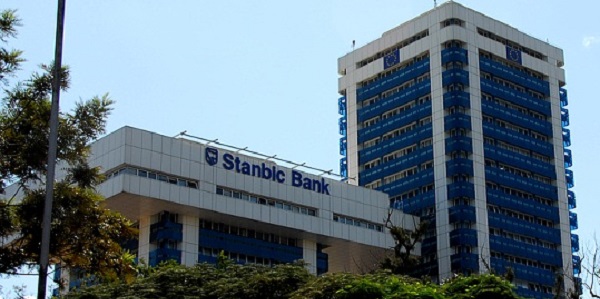
Bank’s CEO is optimistic that the second half will be better
Kampala, Uganda | JULIUS BUSINGE | Stanbic Bank has recorded same net profit in the half year of 2018 as it was last year, underscoring how the industry is struggling to grow in the era of low interest rates and tough economic conditions.
Financial results released on August 08 shows that the lender generated a merely 0.7% growth in revenue to Shs96bn during half year of this year, up from Shs 95bn. However, this is below the Shs107bn recorded in the previous year.
Patrick Mweheire, the bank’s chief executive officer said the slight increase in profit is attributed to growth in non-interest income revenues supported by increase in customer transactions.
“Operating costs were also well managed, growing by only 3.6% year on year and credit risk also remained very strong with credit loss ration improving to 0.9%,” he said.
Out of the bank’s Shs321bn income earned during the period, Shs7bn higher compared with last year, non-interest revenue recorded a 12% growth while net interest income dropped by 5% due to a downward trend in the interest rates.
The bank’s income distribution split was at 47% to 53% on non-interest and in net interest income, respectively, compared with last year that was 43% and 57%. Loans and advances grew by 13.2% to Shs263bn.
Similarly deposits from customers grew by Shs 523bn, representing 16.2% growth compared with the same period last year, supported by the bank’s strong customer focus through its client eco systems and nurturing new customer relationships.
Total assets grew by 7.4% to Shs 353bn supported by strong customer deposit growth.
The bank said the excess liquidity is being deployed across the different asset classes, mainly customer loans, in government securities and interbank lending.
This new development comes at the time the economy is showing signs of recovery and interest rates taking a downward trend.
It also coincides with the high uptake of the bank’s new services, with agent banking transactions being far the fastest growing – estimated at 1.6million transactions for the full year, 2018.
Commenting on Stanbic’s and general performance of the banks, Salima Nakiboneka, a financial analyst at the South African-based firm, Stanlib told The Independent that the overall performance of Stanbic was flat in the first half of 2018 partly because of the tough economic environment that did not support growth of businesses.
Nakiboneka said as private sector credit continues to grow upwards on the back of reduced interest rates on the market, chances are that loans will become more affordable and banks will earn more.
She said the bank also need to think of better ways of reducing their costs by embracing digital banking, agent banking so as to improve profitability.
Data from Bank of Uganda (BoU) shows that the country’s economy is expected to grow by 6.5% in the next three years.
This will be supported by public infrastructure investments, improving agricultural productivity, recovery in foreign direct investment and strengthening private sector credit growth.
This recovery ideally means banks will have chance to lend more cash to those involved in these sectors and earn more.
Mutebile’s policy stance
On Aug.13, BoU Governor, Emmanuel Tumusiime-Mutebile said he was keeping the central bank rate at 9% in line with the objective of keeping inflation in check.
Data from Uganda Bureau of Statistics (UBOS) indicates that headline inflation rose to 3.1% in the year ending July 2018 from 2.1% in the year ended June 2018.
Core inflation, which is the target for BoU’s monetary policy also went up to 2.5% from 0.8% in the period under review.
Mutebile said core inflation is expected to continue rising and peak in the range of 6-7% in the second half of 2018/2019 but will stabilise around the medium term target of 5% by end 2019.
However, Mweheire said there are indications of a better second half of 2018.
“We are beginning to see 6% and 6.5% in the last couple of quarters, a sign that we are turning the corner,” he said.
He said the private sector credit is also beginning to bounce back at about 12% after some anaemic growth the last couple of years.
Personal borrowing, agriculture, manufacturing and services have also started showing signs of growth, Mweheire, said.
 The Independent Uganda: You get the Truth we Pay the Price
The Independent Uganda: You get the Truth we Pay the Price



